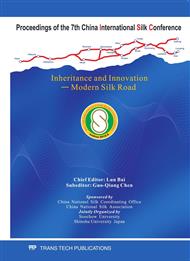p.1016
p.1024
p.1030
p.1035
p.1040
p.1045
p.1052
p.1059
p.1070
Effects of Perceived Face Image on Cosmetic Brand Personality
Abstract:
This document explains and demonstrates how Korean women perceive their face image and its’ effects on cosmetic brand personality. Face image was measured by the level of face satisfaction and face importance. 600 Korean women aged 20-39 were subjects of this study. 5 Korean cosmetic brands and 5 imported cosmetic brands were selected to measure cosmetic brand personality. Korean women were satisfied with their eyes, eyebrows, and lips but their satisfaction level was very low on face skin. The level of importance on facial parts was significantly higher than satisfaction level. Face image of unmarried women in 20’s with high income and pin money were higher than married women in 30’s with low income and pin money. Factors of cosmetic brand personality were consisted of aesthetics, integrity, interests, capability, and audacity. Face satisfaction of Korean women affected on aesthetics, integrity, interests, capability, and audacity of cosmetic brand personality. Face importance affected on capability of cosmetic brand personality.
Info:
Periodical:
Pages:
1040-1044
Citation:
Online since:
January 2011
Authors:
Price:
Сopyright:
© 2011 Trans Tech Publications Ltd. All Rights Reserved
Share:
Citation:


